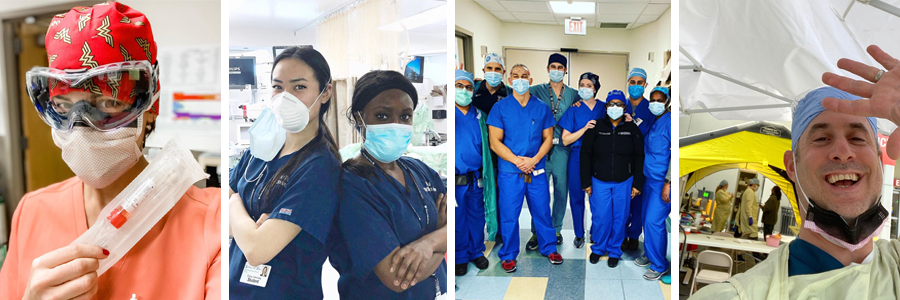
Whether developing campus expansion plans or exploring cutting-edge technologies, PPMC’s leaders are always looking towards the future. That’s why it was no surprise that in the earliest days of the COVID-19 crisis when social distancing was merely a suggestion and grocery stores still had hand sanitizer in stock, PPMC staff were already making extensive preparations to handle an influx of patients and creating safe spaces to care for them.
Just a few weeks before the coronavirus hit the Philadelphia area, Peter D. Sananman, MD, director of Disaster Preparedness and an emergency medicine physician, was running a mass casualty drill during his Wilderness and Disaster Medicine course for Perelman School of Medicine students. By March 17, class was over, and PPMC was facing a real-world challenge.
Though the emergency department (ED) was not yet overwhelmed by patients concerned about COVID-19, Sananman wanted to ensure that PPMC was fully prepared for a surge as soon as possible. With the support of leadership and the help of emergency medicine residents Jonathan Bar, MD, and Seth Merker, MD, Sananman created a staging area outside of the ED. “It’s normally a two-week process to build a tent like this during a pandemic. We got ours up in eight hours. It was an all-out blitz,” he said.
For several weeks, patients moved through the temporary tent one-by-one and were examined by redeployed clinicians, then sorted into categories that determined whether they were directed to the ED, treated in the tent, or tested for coronavirus and discharged to self-isolate. By sending individuals with mild symptoms home with instructions and assessing other non-COVID medical needs in the tent, the ED was able to maintain the capacity to care for more severely ill patients. Though the tent can easily be erected again if the need arises, PPMC's other spaces have been able to handle the current patient volume.
When a patient suspected of having COVID-19 is admitted, they are isolated in a negative pressure room. These rooms allow air in, but trap it so airborne contaminants cannot get out. Instead, the compromised air is exhausted directly out of the hospital. For patients at risk of aerosolizing and spreading the coronavirus, a negative pressure room creates a crucial barrier between them, their care team and other staff, and other patients.
Prior to the pandemic, PPMC had 22 negative pressure rooms, but an additional 82 rooms were swiftly converted to accommodate a larger volume of patients. The ED increased from six negative pressure spaces to 15, and an operating room was also updated in an effort to be prepared.
“Very early on, our senior leadership team began evaluating every space to determine what we could do to expand our capabilities to treat COVID-19 patients,” said Gary Ginsberg, assistant executive director of Facilities. “Our Engineering team partnered with Herman Goldner Co., Inc. to convert rooms to support negative pressure. The only solution is isolation, and their exceptional work was crucial in allowing us to maximize the safety of our patients and staff members.”